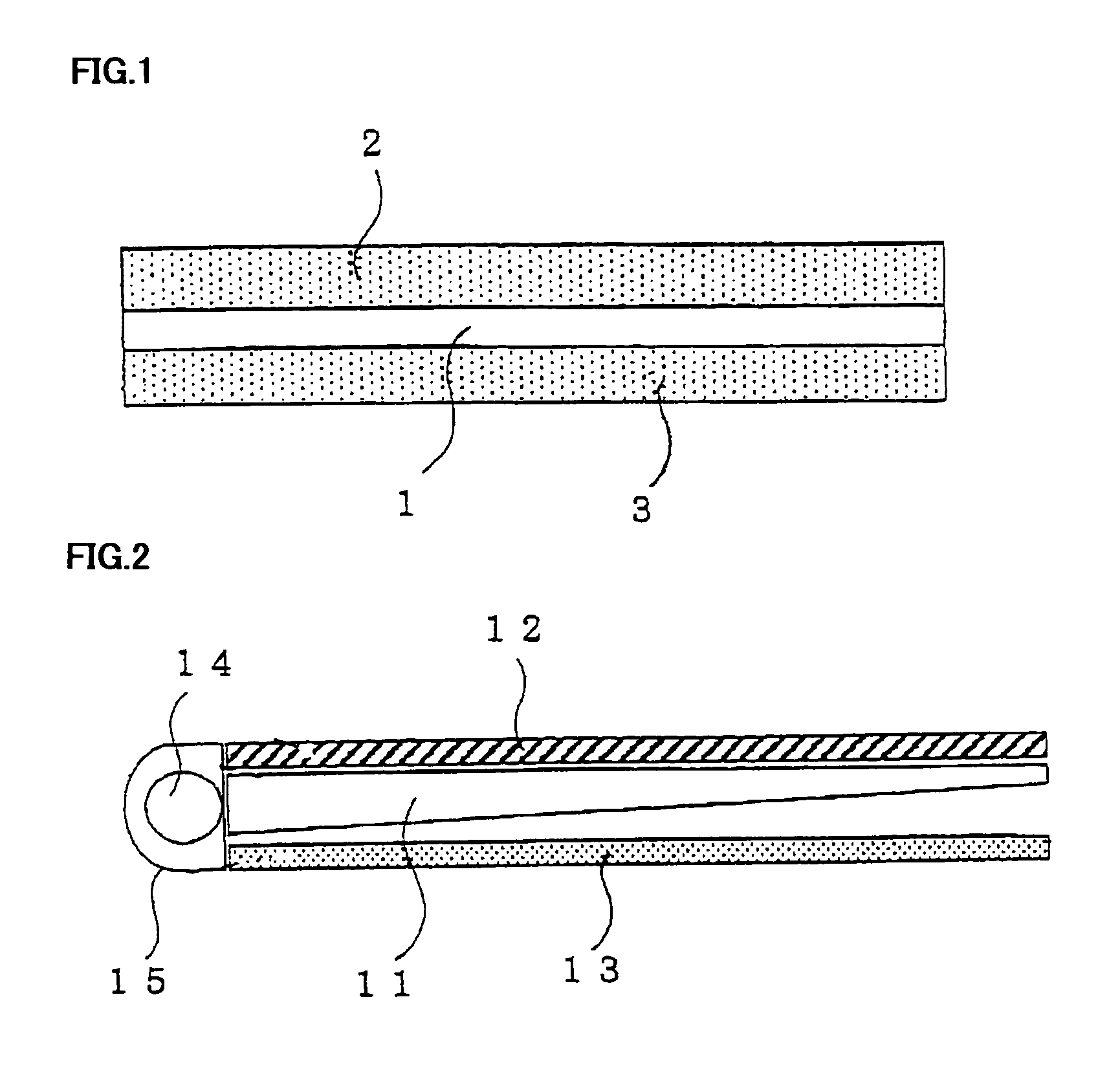Optical planar thermoplastic resin composition
a thermoplastic resin and optical planar technology, applied in the direction of instruments, polarising elements, lighting and heating apparatuses, etc., can solve the problems of insufficient optical isotropy, light resistance, surface hardness, and mechanical strength, and can not meet the requirements of conventional planar optical transparent polymer materials, etc., to achieve high heat resistance, high optical isotropy, and high transparency
- Summary
- Abstract
- Description
- Claims
- Application Information
AI Technical Summary
Benefits of technology
Problems solved by technology
Method used
Image
Examples
production example 1
[0246]A 30 L vessel type reactor equipped with a stirrer, a temperature sensor, a condenser tube, and a nitrogen introduction pipe was charged with 9,000 g of methylmethacrylate (MMA), 1,000 g of methyl 2-(hydroxymethyl)acrylate (MHMA), 10,000 g of 4-methyl-2-pentanone (i.e., methyl isobutyl ketone, MIBK), and 5 g of n-dodecylmercaptane. The mixture was heated to 105° C. under a nitrogen stream to cause reflux, at which 5.0 g of t-butylperoxyisopropyl carbonate (KAYACARBON BIC-75, available from Kayaku Akzo Co., Ltd.) was added as a polymerization initiator, and at the same time, solution polymerization was carried out under reflux at from about 105° C. to 120° C., while a solution containing 10.0 g of t-butylperoxyisopropyl carbonate and 230 g of MIBK was added dropwise over 4 hours. The reaction mixture was then aged over further 4 hours.
[0247]Then, 30 g of a mixture of stearyl phosphate and distearyl phosphate (Phoslex A-18, available from Sakai Chemical Industry Co., Ltd.) was a...
production example 2
[0249]A 30 L vessel type reactor equipped with a stirrer, a temperature sensor, a condenser tube, and a nitrogen introduction pipe was charged with 8,500 g of MMA, 1,500 g of MHMA, 10,000 g of MIBK, and 5 g of n-dodecylmercaptane. The mixture was heated to 105° C. under a nitrogen stream to cause reflux, at which 10.0 g of t-butylperoxyisopropyl carbonate was added as a polymerization initiator, and at the same time, solution polymerization was carried out under reflux at from about 105° C. to 120° C., while a solution containing 10.0 g of t-butylperoxyisopropyl carbonate and 230 g of MIBK was added dropwise over 4 hours. The reaction mixture was then aged over further 4 hours.
[0250]Then, 600 g of acetic acid was added to the polymer solution obtained, which was allowed to cause cyclization condensation reaction at from about 90° C. to 120° C. for 5 hours. Then, the polymer solution obtained was allowed to cause cyclization condensation reaction and devolatilization in a vent type t...
production example 3
[0252]The reaction was carried out in the same manner as described in Production Example 1, except that the amounts of MMA and MHMA in Production Example 1 were changed to 8,000 g and 2,000 g, respectively, to obtain transparent pellets of a lactone ring-containing polymer.
[0253]The lactone ring-containing polymer obtained was subjected to the measurement of dynamic TG, and as a result, a weight loss of 0.64% by mass was detected. Also, the lactone ring-containing polymer had a weight average molecular weight of 144,000, a melt flow rate of 9.2 g / 10 min., and a glass transition temperature of 131° C.
PUM
| Property | Measurement | Unit |
|---|---|---|
| wavelength | aaaaa | aaaaa |
| total light transmittance | aaaaa | aaaaa |
| thickness | aaaaa | aaaaa |
Abstract
Description
Claims
Application Information
 Login to View More
Login to View More - R&D
- Intellectual Property
- Life Sciences
- Materials
- Tech Scout
- Unparalleled Data Quality
- Higher Quality Content
- 60% Fewer Hallucinations
Browse by: Latest US Patents, China's latest patents, Technical Efficacy Thesaurus, Application Domain, Technology Topic, Popular Technical Reports.
© 2025 PatSnap. All rights reserved.Legal|Privacy policy|Modern Slavery Act Transparency Statement|Sitemap|About US| Contact US: help@patsnap.com



